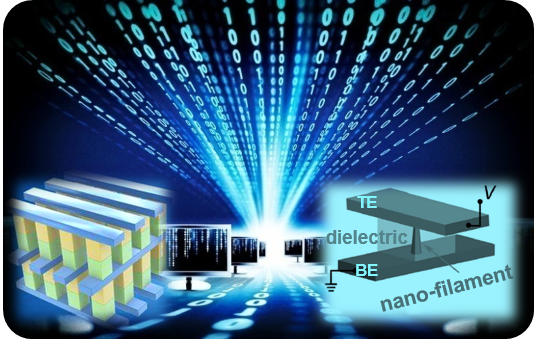
With the advent of the era of the big data, the global information grows explosively. More and more commands including low energy consumption, miniaturization, high capacity and high functional density etc. have been proposed for satisfying mass information storage and process. So it is urgent to develop the novel memories based on the new architectures, new principles and new materials. Resistive random access memory (RRAM), which uses the electrically switchable resistance to store digital information, is considered as one of the most promising candidates for the next-generation memories, due to its nonvolatility, simple structure, low-energy, ultrahigh-density, and fast-speed etc. Our research group mainly study the controllable construction, effective modulation and functionalization of nanochannels and interface structures in RRAM devices, and explore new methods and the related physical mechanisms for precise and efficient modulation of the resistance states of devices via multiple physical fields such as electric fields, and magnetic ones in order to optimize the performances of memory devices and realize the multi-resistance-values and multifunctionality. Some outstanding results have already been achieved in constructing novel nanostructure and modulating physical properties by precisely controlling ions-migration at the nanoscale in the resistive switching devices. Up to now, more than 10 papers including Adv. Mater. and Nanoscale etc have been published. And 4 patents have been applied. These studies are supported by joint research of the NSFC-NRF scientific cooperation program (Grant No. 11611540333).